#tar baby
Photo

At some point in life the world's beauty becomes enough. You don't need to photograph, paint or even remember it. It is enough. No record of it needs to be kept and you don't need someone to share it with or tell it to. When that happens — that letting go — you let go because you can.
—Toni Morrison, Tar Baby (1981)
[Scott Horton]
1K notes
·
View notes
Text

Toni Morrison, 1974.
Photographer: Waring Abbott
#toni morrison#beloved#sula#song of solomon#jazz#love#home#paradise#tar baby#the bluest eye#american literature#african american literature#black history month#literature
41 notes
·
View notes
Text
When laborers imported from Haiti came to clear the land, clouds and fish were convinced that the world was over, that the sea-green green of the sea and the sky-blue blue of the sky were no longer permanent. . . Only the champion daisy trees were serene. After all, they were part of a rain forest already two thousand years old and scheduled for eternity, so they ignored the men and continued to rock the diamondbacks that slept in their arms. It took the river to persuade them that indeed the world was altered. That never again would the rain be equal, and by the time they realized it and had run their roots deeper, clutching the earth like lost boys found, it was too late. The men had already folded the earth where there had been no fold and hollowed here where there had been no hollow, which explains what happened to the river. It crested, then lost its course, and finally its head. Evicted from the place where it had lived, and forced into unknown turf, it could not form its pools or waterfalls, and ran every which way. The clouds gathered together, stood still and watched the river scuttle around the forest floor, crash headlong into the haunches of hills with no notion of where it was going, until exhausted, ill and grieving, it slowed to a stop just twenty leagues short of the sea.
Tar Baby by Toni Morrison
48 notes
·
View notes
Photo

Tar Baby
Toni Morrison
344 notes
·
View notes
Text

57 notes
·
View notes
Text


Song of the South
13 notes
·
View notes
Text

From Toni Morrison’s Tar Baby
10 notes
·
View notes
Text
The end of the world, as it turned out, was nothing more than a collection of magnificent winter houses on Isle des Chevaliers. When labourers imported from Haiti came to clear the land, clouds and fish were convinced that the world was over, that the sea-green green of the sea and the sky-blue sky of the sky were no longer permanent. Wild parrots that had escaped the stones of hungry children in Queen of France agreed and raised havoc as they flew away to look for yet another refuge. Only the champion daisy trees were serene. After all, they were part of a rain forest already two thousand years old and scheduled for eternity, so they ignored the men and continued to rock the diamondbacks that slept in their arms. It took the river to persuade them that indeed the world was altered. That never again would the rain be equal, and by the time they realized it and had run their roots deeper, clutching the earth like lost boys found, it was too late. The men had already folded the earth where there had been no fold and hollowed her where there had been no hollow, which explains what happened to the river. It crested, then lost its course, and finally its head. Evicted from the place where it had lived, and forced into unknown turf, it could not form its pools or waterfalls, and ran every which way. The clouds gathered together, stood still and watched the river scuttle around the forest floor, crash headlong into the haunches of hills with no notion of where it was going, until exhausted, ill and grieving, it slowed to a stop just twenty leagues short of the sea.
— Tar Baby (Toni Morrison)
21 notes
·
View notes
Text
i can't bring all of my books with me, so i'm finishing as many as i can before i move. rn i need to finish 1 book per day. i've kept up the pace for the past 3 days but i might lose steam with kafka.
#so far i've read:#persepolis 2#anansi boys#and#tar baby#to read:#kafka the metamorphosis the penal colony and other stories#the odyssey#faust#rebecca#dirk gently's holistic detective agency#etc etc
24 notes
·
View notes
Quote
It was a silly age, twenty-five; too old for teenaged dreaming, too young for settling down. Every corner was a possibility and a dead end.
— Tar Baby (Toni Morrison)
#book quotes#toni morrison#tar baby#growing up#maturity#young adults#possibilities#ambitions#restlessness
6 notes
·
View notes
Quote
While Margaret had been lying in her sculptured bedroom, fighting hunger, anger and fear, Valerian was in his greenhouse staring out of the one glass window imagining what was not so: that the woman in the washhouse was bending over a scrub board rubbing pillow slips with a bar of orange Octagon soap. He knew perfectly well that a washer and dryer were installed there (he couldn't hear the hum, for the music and the drone of the air conditioner in the greenhouse obliterated it, but he could see the steam puffing from the exhaust pipe) but the scrub board, the pillow slips and the orange soap were major parts of what he wished to see: the hydrangea, fat and brown in the September heat. His father, knocked down by a horse-drawn milk truck, lay in bed, the house already funereal. Valerian went out back to the shed where a washerwoman did the family's laundry. She was thin, toothless and looked like a bird. Valerian sometimes visited her, or rather hung around her shed, asking questions and chattering. She was like a pet who would listen agreeably to him and not judge or give orders. The first time he came, she had said, by way of polite conversation -- the pointless conversation of an adult without stature to a child who had some -- "What your daddy doin today?" And he had answered that his daddy was away on a sales trip to Atlantic City. From then on she greeted him that way. He would wander to the shed door and she would ask, "What your daddy doin today?" and he would tell her, as a preliminary to the conversation, "He's at the factory today" or "He's in New York today." It was a delightful opener to him because she and his father had never laid eyes on each other. A sort of grown-up conversation followed the question that they both took seriously. On one of the Wednesdays she came to work, his father died without regaining consciousness. Valerian was fussed over by his mother and relatives and then left alone while they busied themselves with death arrangements. He wandered out to the washhouse that afternoon and when the woman said, "Hi. What your daddy doin today?" Valerian answered, "He's dead today," as though tomorrow he would be something else. The woman looked up at him and paused for an awkward silence in which he suddenly understood the awfulness of what had happened and that his father would also be dead the next day and the day after that as well. In that instant, while the birdlike colored woman looked at him, he knew limitlessness. The infinity of days in which the answer to her question would be the same. "He's dead today." And each day it would be so. It was too big, too deep, a bottomless bucket of time into which his little boy legs were sinking and his little boy hands were floundering.
Finally she blinked and pointed to a shelf behind him. "Hand me that soap," she said. And he did. "Now unwrap it and stand right over here. Up close. Closer." He did that too and she made him rub soap on the wet pillowcase that clung to the washboard. He scrubbed his heart out, crying all the while, pillowcase after pillowcase, rubbed and rubbed until his knuckles were cherry red and his arms limp with fatigue. And when he could not do another, she patted him on the head and said she would hire him any day. Later George, the butler they had before Sydney, found out about it (he had wondered about those cherry-red knuckles) and told him to stay out of there because that woman drank like a fish and he mustn't let her use him to do her work. Valerian told him to mind his own "beeswax," but they let the woman go and Valerian never again had to say, "He's dead today," but he said it anyway to himself until his little boy legs were strong enough to tread the black water in the bucket that had no bottom. So, inconvenient as it was, he had insisted on a separate washhouse when he built L'Arbe de la Croix, less for an island touch than for the remembrance of having once done something difficult and important while the world was zooming away from him. Now another washerwoman came. It wasn't quite the same. No Octagon soap, no waving gleaming washboard, but he liked looking at it through his greenhouse window knowing there was a woman in there doing something difficult but useful in peace. A soothing thought to concentrate on while his own house was prickly with tension and unanswered questions.
Tar Baby, Toni Morrison
4 notes
·
View notes
Text
The Essential Toni Morrison
Looking to read one of her books? Let us help.
By Veronica Chambers
Feb. 18, 2021

ebruary 18, 2021 would have been Toni Morrison’s 90th birthday. As we approach the anniversary of a global pandemic that has changed our lives in every way, it seems a fine time to dive back into the world of Toni Morrison. The questions she asked in a 2002 lecture seem wholly relevant now, almost 20 years later: “To what do we pay greatest allegiance? Family, language group, culture, country, gender? Religion, race? And if none of these matter, are we urbane, cosmopolitan, or simply lonely? In other words, how do we decide where we belong? What convinces us that we do?”
In everything Morrison wrote, she offered narratives that revealed the journeys of characters, specific but universal, flawed and imperfect, with a deeply American desire for freedom and adventure. One might say that because her characters were almost exclusively African-American, the quest to be free — in mind, body and spirit — was the consistent adventure. She was also a masterful crafter of windows; when you opened a book of hers, the worlds you entered were so rich with detail, you could feel the molecules around you change as if you’d just taken a long flight and were descending onto the tarmac in a town or city where you’d never been.
I’ll say this. Reading Morrison can be daunting. She won the Nobel Prize, the Pulitzer, the Presidential Medal of Freedom. She was, and will remain for lifetimes to come, one of the finest writers to craft narrative in the English language. As Dwight Garner wrote when she died in 2019, “Morrison had a superfluity of gifts and, like few other writers of her era, bent language to her will. Her prose could be lush, or raw and demotic, or carefree and eccentric, often on a single page. She filtered folklore,
biblical rhythms, dreams, choral voices and a steep awareness of history into her work. In the best of her 11 novels … she transmuted the basic matter of existence into profound works of art.”
One of the greatest joys of Toni Morrison’s work is knowing that you will never get it all on the first read. In her Nobel Prize speech, she famously said, “We know you can never do it properly — once and for all. Passion is never enough, neither is skill. But try.”
She was talking, ostensibly, about writing and writers. But I think it also applies to readers, her readers in particular, the millions of people around the world who have read and re-read her books. To read Toni Morrison is to know that from her brilliant opening lines to the stunning last pages that leave you shook that you will likely never match her wit and wisdom, but what joy there is in trying!
As someone who had the privilege of interviewing her several times over the last decade of her life, I think I can say with confidence that she wanted all of us — intellectuals and romance readers, book club aficionados and those of us who binge TV more than books — to get in where we fit in. Creatively, Toni Morrison set a large and lavish table of literature. If you’re new to her work, or haven’t read her in a long while, here are some thoughts about where to start.
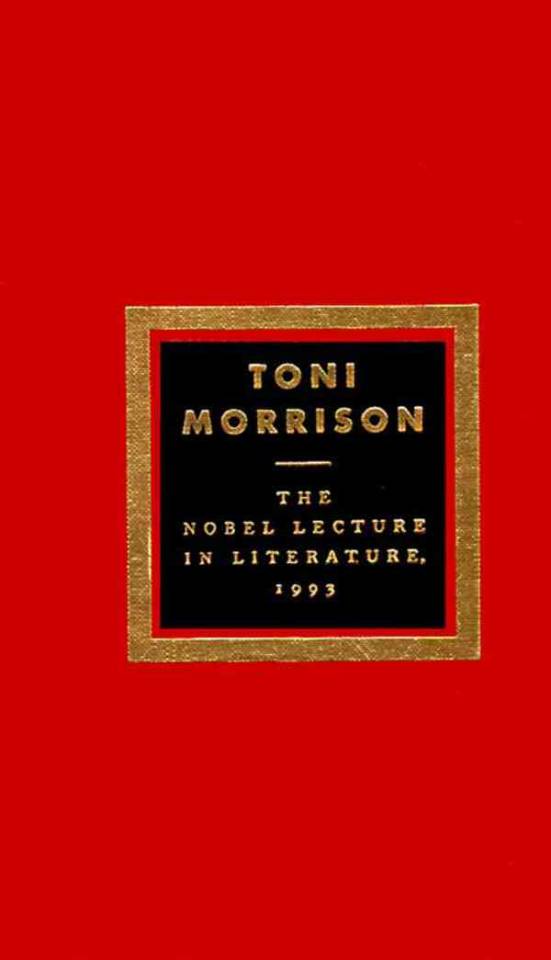
My attention span is short.
If, like so many of us, you’ve found the anxiety-ridden free time of the pandemic not exactly conducive to deep reading, I’d start with her Nobel Lecture in Literature. It is a slim 10 pages, available as a digital download and it is a powerful meditation on why we read, why writers write, and why it matters.
It is, from beginning to end, chock full of the gorgeous, sugar-spun prose that the Nobel Prize judges noted when deciding to award the prize to Morrison, “who in novels characterized by visionary force and poetic import, gives life to an essential aspect of American reality.”
It was in this speech that she first uttered the words, “We die. That may be the meaning of life. But we do language. That may be the measure of our lives.”
Relevant to the moment we’re in — and any hard times still to come — she offers up both an invitation and an invocation for the power of vulnerability to transform our relationships and ourselves: “For our sake and yours forget your name in the street; tell us what the world has been to you in the dark places and in the light. Don’t tell us what to believe, what to fear. Show us belief’s wide skirt and the stitch that unravels fear’s caul.”
And she does what she did better than almost anyone else, bring to life the humanity of enslaved African-Americans, writing them so real that you can almost hear their whisper: “Tell us about a wagonload of slaves, how they sang so softly their breath was indistinguishable from the falling snow.”
Published March 1, 1994, 40 pp.
Buy this book: Local booksellers, Barnes and Noble, Amazon.

I want to read one powerful, not too long, book.
Published in 1970, Morrison’s debut novel, “The Bluest Eye,” tells the story of Pecola Breedlove, a Black girl who has so deeply absorbed that whiteness conveys privilege and beauty and — this is important — protection, that she prays for God to turn her eyes blue.
It’s worth mentioning that white characters are rare in Morrison’s novels and among the many things this does is erase the prospect of easy villains. In “The Bluest Eye,” for example, the focus is always on Pecola — her jeopardy, her world view, her survival.
As Morrison would later tell The Times, “I was eager to read about a story where racism really hurts and can destroy you.”
But the book itself is by no means polemic. This is Morrison showing us how much she has mastered craft. There is not a single word in this novel that wasn’t considered, chosen and polished with the kind of love a real Pecola Breedlove would long for. An example: “Nuns go by as quiet as lust and drunken men and sober eyes sing in the lobby of the Greek hotel.”
Published 1970, 224 pp.
Buy this book: Local booksellers, Barnes and Noble, Amazon.
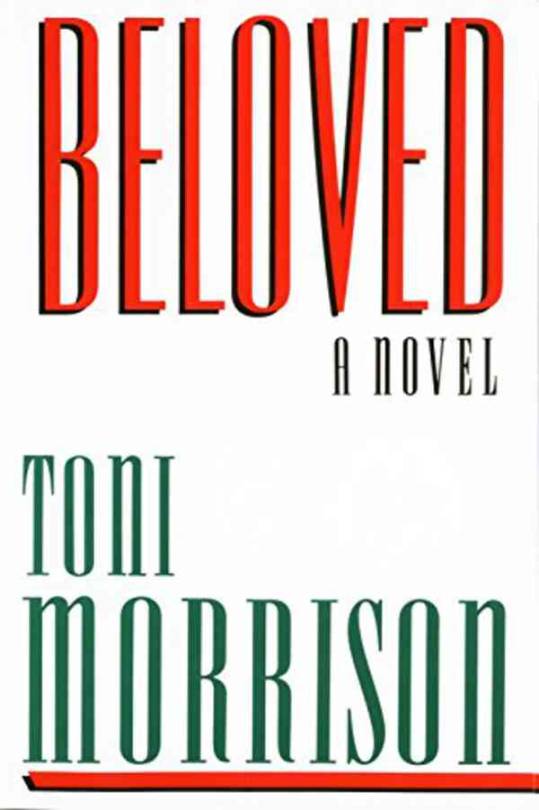
I want to read a masterpiece.
“Beloved” is considered Morrison’s most important novel and rightly so. Many know it from the movie adaptation that was produced by and stars Oprah. The novel was inspired by the true story of Margaret Garner, a runaway enslaved woman, who decided when realizing that her captors were upon her, killed her daughter rather than allow her to return to the brutality of plantation life. It had been Garner’s aim to kill all four of her children before killing herself. It was a case that made papers across the nation, including The Times.
As Rebecca Carroll wrote in her Overlooked obituary of Garner, “Garner’s story has been preserved in history as both sensational and singular. It writ large a question that had been unanswered in the homes and hearts of whites in pre-Civil War America: Was slavery a fate worse than death? Garner, with knife in hand, gave an answer that was impossible to ignore.”
Morrison would go on to write the libretto for an acclaimed opera about Garner. In 2010, she told NPR, “"The interest is not the fact of slavery, but of what happens internally, emotionally, psychologically, when you are in fact enslaved and what you do you do to try to transcend that circumstance. And that really is what Margaret Garner reveals.”
“Beloved” is Morrison at the height of her gifts, asking and answering dozens of questions across the narrative: What is required in motherhood when the world is at its most menacing? What might this story tell us about life after death, love after despair, the healing power of forgiveness and the shelf life of vengeance and rage?
As Morrison once told the critic Hilton Als, “I didn’t want to grow up to be a writer, I wanted to grow up to be an adult.” And so in “Beloved,” as we will in other novels like “Jazz" and “A Mercy,” we get to see what a grown-up love looks like. When Paul D., who was enslaved at the same plantation as Sethe, the protagonist, describes their relationship, he never needs to use the word “love” to say what she means to him: ““There are too many things to feel about this woman. His head hurts. Suddenly he remembers Sixo trying to describe what he felt about the Thirty-Mile Woman. “She gather me, man. The pieces I am, she gather them and give them back to me in all the right order. It’s good, you know, when you got a woman who is a friend of your mind.”
Incidentally, “The Pieces I Am” is also the name of the powerful documentary on Morrison.
Published Aug 12, 1987, 288 pp.
Buy this book: Local booksellers, Barnes and Noble, Amazon.
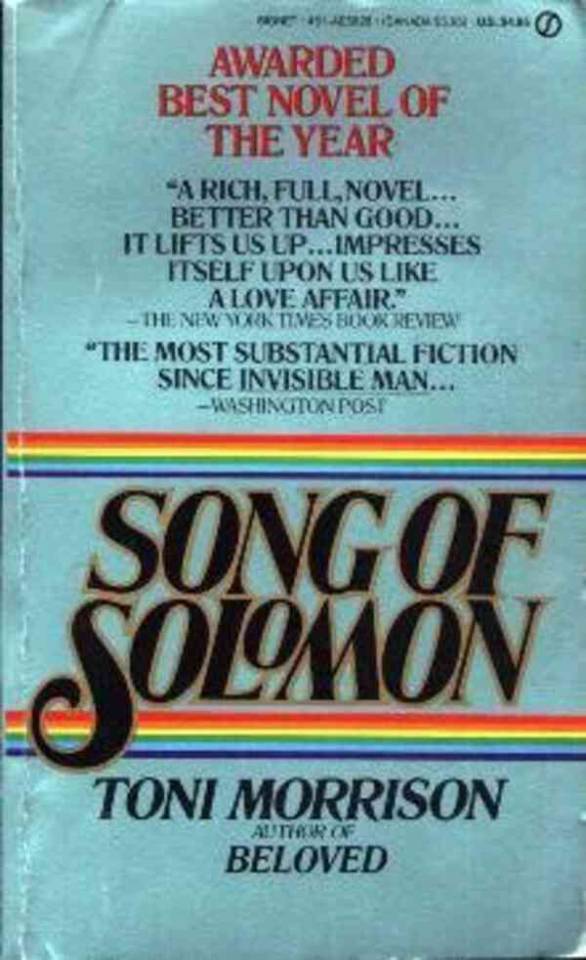
I love Marvel, mythology and origin stories.
“Song of Solomon,” the story of one Macon “Milkman” Dead, is infused with Morrison’s love of language and mythology. It begins with his birth the day after an insurance agent attempts to fly from the roof of the local hospital: “I will take off from Mercy and fly away on my own wings. Please forgive me. I loved you all.''
The palette of language Morrison uses in “Song of Solomon” is particular and vast. As she once said, “In my own family, there was street language, there was sermonic language.You know people actually quoted the Bible to you.” Morrison weaves that mixture of languages, high and low, slang and holy into a quest where the hero of the story searches for gold, purpose, meaning and truth.
In an interview about the book she said, “ “I was very enchanted with the myths and sagas, and, you know, mythological stories that had been told to us as we were kids. Because I thought, the one thing you can say about a myth is that there’s some truth in there, no matter how bizarre they may seem.
“And the one that I had always heard that seemed like just a child's wish was the one about Black people — Black slaves — who came to the United States, and under certain circumstances, they would fly back to Africa.”
She went on to explain that of course, the mythography that there were enslaved people who could fly had to do with escape. What struck her in reading narratives of former enslaved people that were collected in the 1930s was that this was a myth that came up again and again. Some people said they’d heard of people who could fly. Some claimed to have seen it with their own two eyes. But no one, Morrison noted, ever told an interviewer that the question was crazy or unheard of. The mythology of flight and freedom was deeply familiar to all of the former slaves. Throughout “Song of Solomon,” there is a beautifully woven thread of the possibility that this ancestral folk tale of black people and flight is true. (You can read more about this phenomenon in Virginia Hamilton’s powerful collection of African-American folktales and myths, “The People Could Fly.”)
Published 1977, 337 pp.
Buy this book: Local booksellers, Barnes and Noble, Amazon.

I want to read a story about female friendships.
“Sula” is about two women, cherished friends, who take decidedly different paths. Hilton Als wrote, “Part of the extraordinary power of ‘Sula’ is that it’s a world where men are not the focus. It’s the sound of women’s voices that takes precedence, makes the story.”
At one point in the novel, Sula returns home, and the grandmother who raised her says, “Well, don’t let your mouth start nothing that your ass can’t stand. When you gone to get married? You need to have some babies. It’ll settle you.”
Sula’s response? ““I don’t want to make somebody else. I want to make myself.”
How does a woman make herself? How can two women be friends when they make radically different choices about what their lives might look like? What can you forgive in a friendship and where is the line when the friend who is outlandish, bold and maybe just a little bit unhinged, becomes more of a liability than an inspiration? A full 25 years before books and shows like “Sex and the City” portrayed female friendship as being the emotional center of smart and daring women who wanted to live by their own rules, “Sula” posited that two straight women could actually be the love of each others’ lives.
Published November 1973, 192 pp.
Buy this book: Local booksellers, Barnes and Noble, Amazon.
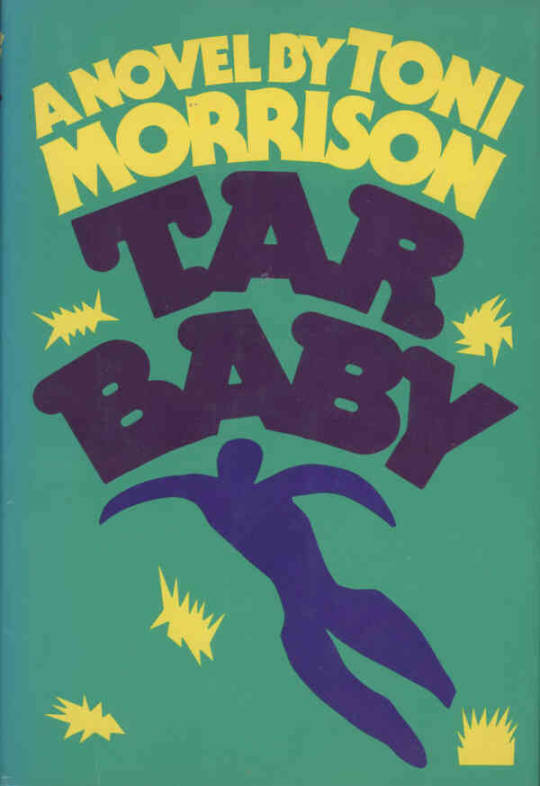
I love books, but make it fashion.
“Tar Baby” is the story of Jadine, a beautiful fashion model based in Paris, and the man she falls in love with — a working class guy from northern Florida called Son. (His father is known as the Old Man.) Can star-crossed lovers from different classes make it? As Jadine and Son traverse each other’s worlds, the question comes up again and again: What is home for these entirely different Black Americans? Is there one place where they can both feel whole?
Jadine and Son’s banter is so light and playful, one can only imagine the delight Morrison took in constructing it.
“Imagine something. Something that fits in the dark. Say the dark is the sky at night. Imagine something in it.”
“A star?”
“Yes.”
“I can’t. I can’t see it.”
“Okay. Don’t try to see it. Try to be it. Would you like to know what it’s like to be one? Be a star?”
“A movie star?”
“No, a star star. In the sky. Keep your eyes closed, think about what it feels like to be one.” He moved over to her and kissed her shoulder. “Imagine yourself in that dark, all alone in the sky at night. Nobody is around you. You are by yourself, just shining there. You know how a star is supposed to twinkle? We say twinkle because that is how it looks, but when a star feels itself, it’s not a twinkle, it’s more like a throb. Star throbs. Over and over and over. Like this. Stars just throb and throb and throb and sometimes, when they can’t throb anymore, when they can’t hold it anymore, they fall out of the sky.”
This novel is also a terrific way to explore Morrison, the naturalist. She slows down time when she takes in nature, with a wonder and precision that brings to mind the poet Mary Oliver. One example: “Bees have no sting on Isle des Chevaliers, nor honey. They are fat and lazy, curious about nothing. Especially at noon. At noon parrots sleep and diamondbacks work down the trees toward the cooler undergrowth. At noon the water in the mouths of orchids left there by the breakfast rain is warm. Children stick their fingers in them and scream as though scalded.''
Published Mar 12, 1981, 320 pp.
Buy this book: Local booksellers, Barnes and Noble, Amazon.
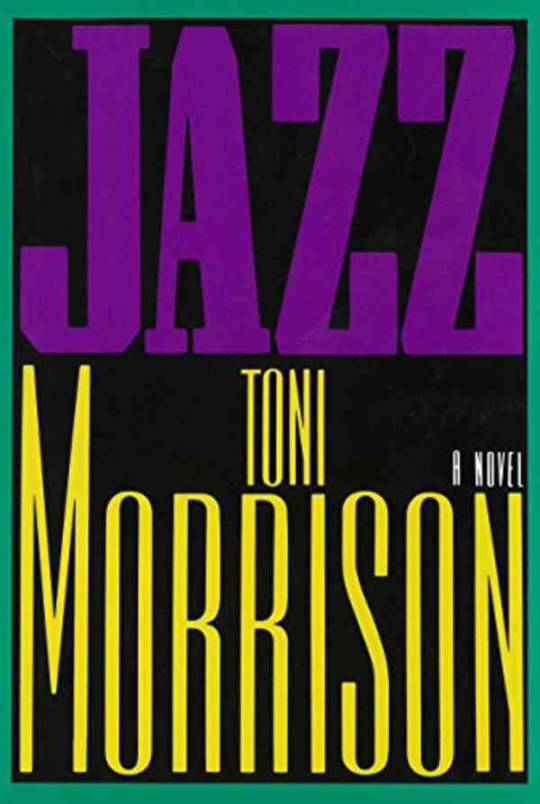
I want historical fiction that swings.
“Jazz” is the story of a love triangle gone violently wrong. But it’s also about Harlem in the 1920s. It is Langston Hughes and Zora Neale Hurston, Paul Robeson and Josephine Baker. It is shiny and powerful, hopeful and talented, it swings with possibility.
One of my favorite passages of all time in any book is from “Jazz,” and it goes like this: “I'm crazy about this City. Daylight slants like a razor cutting the buildings in half. In the top half I see looking faces and it's not easy to tell which are people, which the work of stonemasons. Below is shadow where any blasé thing takes place: clarinets and lovemaking, fists and the voices of sorrowful women. A city like this one makes me dream tall and feel in on things. Hep.”
James McBride, the award-winning author who is also a musician, wrote in this paper that “it is through jazz, actually, that one can best understand the imaginative power and technical mastery that Morrison has achieved over the course of her literary journey. No American writer I can think of, past or present, incorporates jazz into his or her writing with greater effect. Her work doesn’t bristle with jazz. It is jazz. Her novel of the same name is an homage to the genre. Jazz eats everything in its path — rock, classical, Latin. Like the great jazz musicians who evolved out of bebop and moved to free jazz, and whose later work demands listening, Morrison’s later novels are almost as enjoyable listened to as read. That is why, I suspect, she spends exhausting hours in the studio recording her books, instead of letting actors do the job. She’s the bandleader. She wrote the music. She knows where the song is going.”
Morrison recorded most of her own audiobooks, and to hear her say these words and so many others compounds the value of the gift of her narrative. Pat Conroy said that the four most important words in the English language are “tell me a story.” Hearing Morrison read her novels is like having the most elegant, erudite, elder in your tribe saying, “Come. Sit next to me, let me tell you a story.”
In every book, and on every page, one gets the sense that Morrison, who did not publish her first novel until she was 39 and did not quit her day job until more than a decade later, took the art of fiction as a solemn calling. Everything she put on the page was carefully constructed. We feel at home in the pages of her novel because her work is orchestral in scope and yet, especially in the audiobooks, there is always this enchanting intimacy that pulls you in. The books are important and mighty works of American literature, and yet somehow, it feels like she is speaking, writing, singing, just to you.
Published Apr 07, 1992, 229 pp.
Buy this book: Local booksellers, Barnes and Noble, Amazon.
Photograph by Sara Krulwich/The New York Times.
Produced by Rumsey Taylor.
0 notes
Text
That was the sole lesson of their world: how to make waste, how to make machines that made more waste, how to make wasteful products, how to talk waste, how to study waste, how to design waste, how to cure people who were sickened by waste so they could be well enough to endure it, how to mobilize waste, legalize waste and how to despise the culture that lived in cloth houses and shit on the ground far away from where they ate. And it would drown them one day, they would all sink into their own waste and the waste they had made of the world and then, finally they would know true peace and the happiness they had been looking for all along.
Tar Baby by Toni Morrison
8 notes
·
View notes
Text
Two months ago, in Paris, the day she went grocery shopping. One of the happiest days of her life -- full of such good weather and such good news she decided to throw a party to celebrate. She telephoned all the people she loved and some she did not and then drove all the way to the Supra Market in the 19ème arrondissement. Everything on her list was sure to be there, and no substitutes or compromises were necessary: Major Grey's chutney, real brown rice, fresh pimiento, tamarind rinds, coconut and the split breasts of two young lambs. There were Chinese mushrooms and arugula; palm hearts and Bertolli's Tuscany olive oil. If you had just been chosen for the cover of Elle, and there were three count three gorgeous and raucous men to telephone you or screech up to your door in Yugoslavian touring cars with Bordeaux Blanc and sandwiches and a little C, and when you have a letter from a charming old man saying your orals were satisfactory to the committee -- well, then you go to the Supra Market for your dinner ingredients and plan a rich and tacky menu of dishes Easterners thought up for Westerners in order to indispose them, but which were printed in Vogue and Elle in a manner impressive to a twenty-five-year-old who could look so much younger when she chose that she didn't even have to lie to the agencies, and they gave what they believed was a nineteen-year-old face the eyes and mouth of a woman of three decades.
-- Toni Morrison, Tar Baby
0 notes
Photo



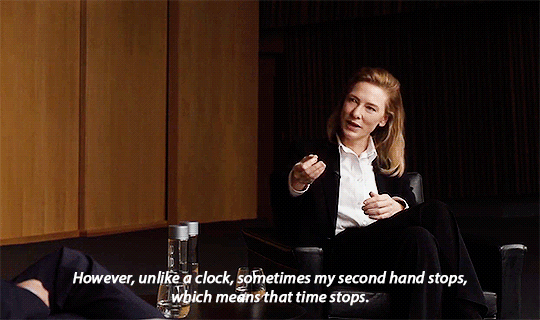


TÁR - dir. Todd Field (2022)
#for my baby#thank you for this date#i loved it so muchhh#tar#taredit#dailyflicks#filmgifs#filmtv#filmtvcentral#cinematv#userladiesofcinema#cate blanchett#cblanchettedit#dailywomen#by tori
553 notes
·
View notes